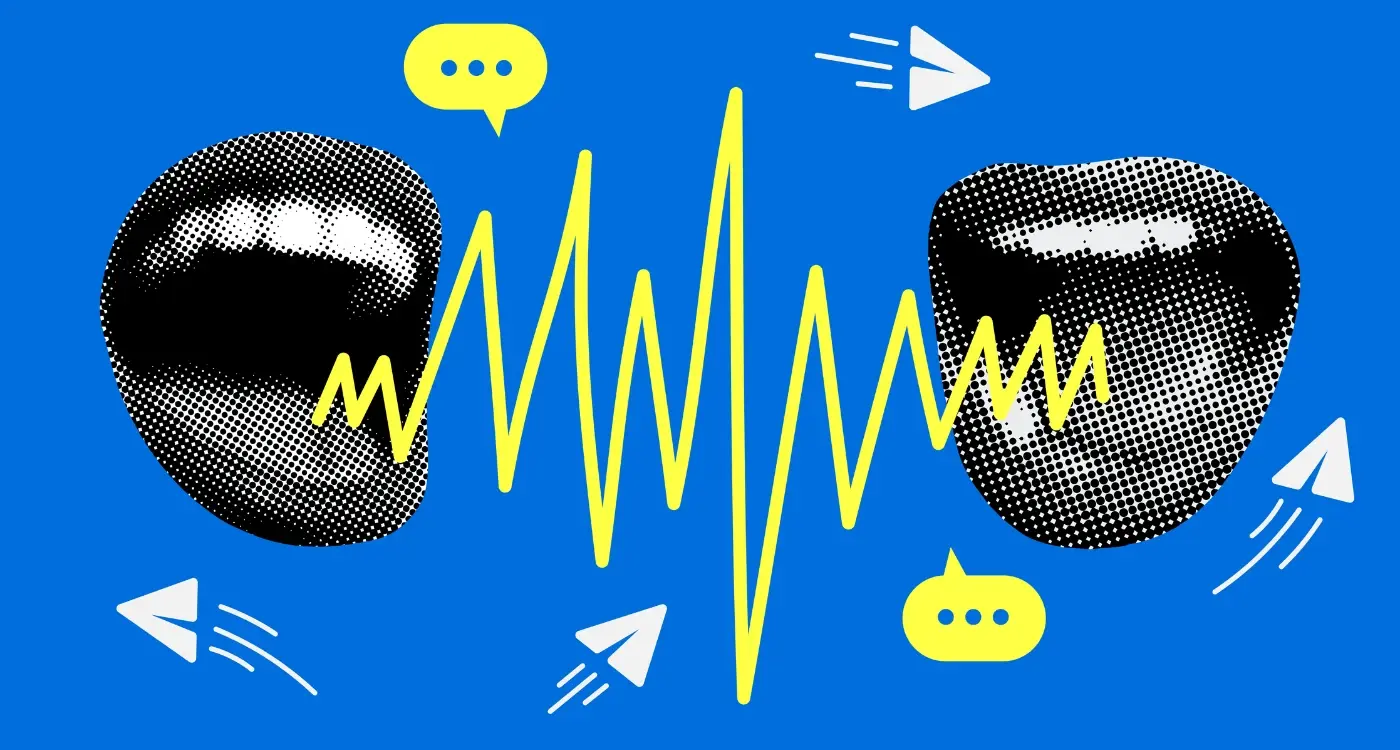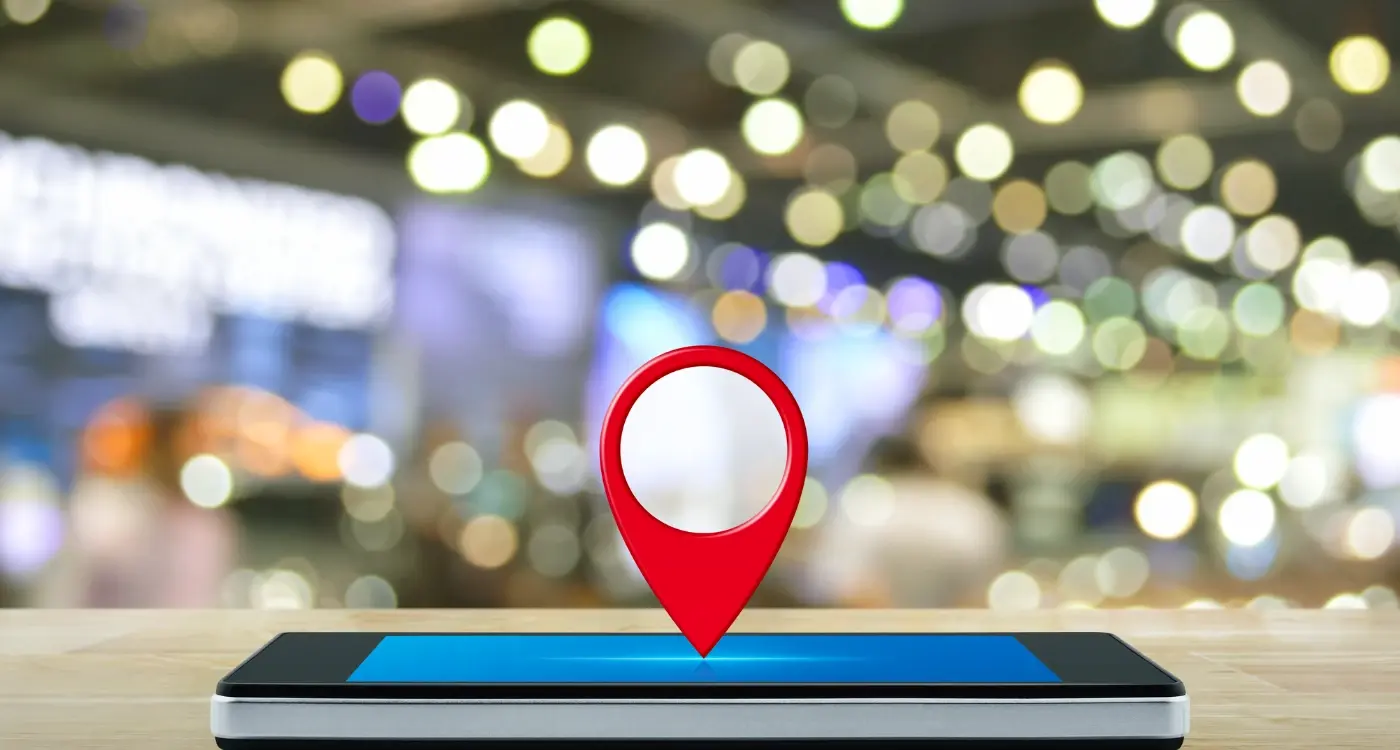Can Voice Technology Work in Noisy Environments?
Voice technology has become part of our daily lives—from asking smart speakers to play music to using voice commands in cars—but there's one big problem that keeps coming up. These devices struggle when there's too much background noise around them. I've worked on mobile apps that use voice features for over eight years now, and this challenge comes up in almost every project we tackle.
Think about trying to talk to your phone in a busy restaurant or asking your smart speaker something while the TV is blasting in the background. Frustrating, right? The technology that seemed so clever suddenly feels deaf and useless. This happens because voice recognition systems were originally designed for quiet environments; they expect to hear your voice clearly without competition from other sounds.
The problem isn't that voice technology is broken—it's that the real world is messy, loud, and unpredictable
Environmental challenges like traffic noise, conversations, music, and even things like air conditioning can interfere with how well these systems understand what you're saying. Some environments are worse than others too—try using voice commands at a train station compared to your bedroom and you'll see what I mean. The good news is that engineers and developers have been working on solutions to make voice technology work better in noisy places. We've come a long way from those early systems that needed perfect silence to function properly, though we still have work to do.
Understanding How Voice Technology Hears
Voice technology works differently to how we hear things. When you speak to your phone or smart speaker, it's not just listening like a person would—it's doing something much more complicated behind the scenes.
Your device has tiny microphones that pick up sound waves when you talk. These sound waves are invisible vibrations in the air that carry your voice. The microphones turn these vibrations into electrical signals, which are then converted into digital information that computers can understand.
Breaking Down Your Speech
Once your device has captured your voice, it needs to work out what you're actually saying. This happens through a process called speech recognition. The technology breaks your words down into tiny pieces—much smaller than individual words—and tries to match them against patterns it already knows.
Think of it like this: the device has been trained on millions of examples of human speech, so it knows what different sounds typically mean when they're put together. It compares the patterns in your voice against this huge database to make its best guess about what you said. Voice recognition accuracy in mobile apps depends heavily on this pattern matching process.
The Challenge Starts Here
Here's where things get tricky. Voice technology was designed to work best when there's just one clear voice speaking. But the real world isn't that simple, is it? There are cars honking, music playing, other people talking, air conditioning humming—all sorts of sounds mixing together.
When multiple sounds reach the microphone at the same time, the device has to somehow separate your voice from everything else. That's like trying to follow one conversation at a busy restaurant when everyone's talking at once. Not easy, even for humans!
The Challenge of Background Noise
Background noise is the biggest enemy of voice technology—and I mean that quite literally. When you're trying to talk to your smart speaker whilst the dishwasher is running, the TV is blaring, or your neighbour decides to mow their lawn, you're witnessing this challenge firsthand. The device struggles to pick out your voice from all the other sounds competing for attention.
Think about how your own ears work when you're in a crowded restaurant. You can focus on the person sitting across from you, but it takes effort to block out conversations from other tables, clinking cutlery, and background music. Voice technology faces the same problem, but without the clever brain processing that helps humans filter sounds naturally.
Why Background Noise Creates Problems
The main issue is that microphones don't distinguish between important sounds (your voice) and unimportant ones (everything else). They capture it all as one big audio soup. Car engines, air conditioning units, children playing—they all create what we call environmental challenges that mask or distort voice commands.
Different types of noise cause different problems too. Sudden loud sounds like a door slamming can completely overwhelm a voice command; steady background hum from appliances creates constant interference that makes speech recognition less accurate.
The Frequency Problem
Here's where it gets technical (but stick with me). Human speech typically sits in certain frequency ranges, and unfortunately, many common household noises occupy those same ranges. This overlap makes it much harder for voice technology to separate your "turn on the lights" from the rumble of the washing machine.
If your voice commands aren't working, try speaking slightly louder and more clearly rather than shouting—shouting can actually distort your voice and make recognition worse.
How Smart Devices Filter Sound
Smart devices use some pretty clever tricks to separate your voice from all the noise around you. Think of it like having super-powered ears that can focus on just one conversation in a room full of chattering people.
The main technique is called beamforming—sounds complicated, but it's quite simple really. Most smart speakers and phones have multiple microphones placed around the device. These microphones work together to figure out exactly where your voice is coming from. When you speak, the sound reaches each microphone at slightly different times; the device uses these tiny differences to create an invisible "beam" that points directly at your mouth whilst ignoring sounds from other directions.
Noise Cancellation Technology
Active noise cancellation is another trick devices use. The microphones constantly listen to background sounds—things like air conditioning, traffic, or the telly. The device then creates an opposite sound wave that cancels out this background noise. It's like having a sound eraser that removes unwanted noises before processing your voice command.
Machine Learning Gets Involved
Modern devices also use machine learning to get better at recognising voices over time. They learn what human speech sounds like compared to other noises; a dog barking has different patterns than someone saying "turn on the lights." The difference between AI and machine learning becomes important here, as these systems continuously improve their ability to distinguish speech from environmental noise.
These technologies work together—beamforming finds your voice, noise cancellation removes background sounds, and machine learning helps the device understand what it's hearing. That's how your phone can still hear you even when you're cooking dinner with the extractor fan running!
Why Some Places Are Harder Than Others
After working with voice technology projects for years, I've learned that location makes all the difference when it comes to how well these systems perform. Some environments are like quiet libraries where every word gets picked up clearly, whilst others are more like trying to have a conversation during a thunderstorm.
Airports and train stations are particularly tricky places for voice recognition. The constant announcements, rolling suitcases, and crowds of people create what we call 'layered noise'—different sounds happening at the same frequencies that voices use. Shopping centres present similar challenges, but with the added problem of music and echoes bouncing off hard surfaces.
The Worst Offenders
Kitchens are surprisingly difficult environments. Running water, sizzling pans, and humming appliances create a mix of sounds that confuse voice systems. Cars present their own unique problems too; road surface changes, wind speed, and even the type of tyres you have can affect how well voice commands work.
The biggest mistake people make is assuming voice technology should work the same everywhere, but environmental challenges mean we need different approaches for different spaces
Industrial settings are the toughest of all. Factories with machinery, construction sites with power tools, and workshops with multiple pieces of equipment running simultaneously create what I call 'acoustic chaos'. The constant, loud background sounds often operate at frequencies that overlap with human speech, making it nearly impossible for standard voice recognition to separate commands from environmental interference.
Why Distance Matters
The further you are from your device, the more these environmental challenges multiply. Background sounds don't just add up—they compound the problem by making your voice seem quieter in comparison to everything else happening around you.
Technology Solutions That Help
The good news is that engineers and developers have been working on this problem for years now—and they've come up with some clever solutions. Modern voice technology uses several different approaches to handle noisy environments, and when they work together, the results can be quite impressive.
Advanced Microphone Arrays
Most smart devices now use multiple microphones instead of just one. These microphone arrays can work out where your voice is coming from and focus on that direction whilst reducing sounds from other areas. Think of it like having multiple ears that can decide which sounds matter most.
The microphones are placed at different spots on the device, and special software compares what each one picks up. By looking at tiny differences in timing and volume between the microphones, the device can separate your voice from background chatter, traffic noise, or the telly.
Machine Learning Gets Smarter
Voice assistants are constantly learning what human speech sounds like compared to other noises. They've been trained on millions of voice samples in all sorts of conditions—quiet rooms, busy cafés, windy streets, you name it. This training helps them recognise speech patterns even when there's lots of other stuff going on.
Some systems can even learn your specific voice over time, making them better at picking you out from a crowd. The more you use them, the smarter they get at understanding you. However, when AI makes wrong predictions, it can lead to misunderstood commands in noisy environments.
| Technology | How It Helps | Best For |
|---|---|---|
| Beamforming | Focuses on sound from specific directions | Crowded spaces |
| Noise Cancellation | Removes steady background sounds | Traffic, air conditioning |
| Echo Reduction | Stops the device hearing itself | Large rooms |
Real-World Examples and Case Studies
Let me tell you about some places where voice technology has been put through its paces. Factories are brilliant testing grounds—they're loud, with machinery clanging and workers shouting over the noise. Companies have successfully deployed voice systems that help workers check inventory or report problems without stopping to type on a tablet. The secret? They use bone conduction headsets and train the system to recognise specific work-related phrases.
Hospitals present their own unique environmental challenges. Between beeping machines, conversations, and general commotion, it's not exactly quiet. Yet voice assistants are being used to help doctors access patient records hands-free during procedures. The technology works because it focuses on medical terminology and uses directional microphones that pick up sound from very close range.
Learning from Real Deployments
Construction sites offer another interesting case study. Workers wear hard hats fitted with voice-activated communication systems that cut through the noise of bulldozers and drilling. These systems succeed because they're designed specifically for that environment—they expect loud background noise and work with it rather than against it.
Shopping centres have tried voice-activated information kiosks with mixed results. The ones that work best are positioned away from main walkways and use noise-cancelling technology. Those placed right in the middle of busy areas? Not so successful. Proper voice user interface design takes these environmental factors into account from the beginning.
The most successful voice deployments in noisy places share one thing: they're designed for that specific environment from the start, not adapted from quiet-room technology.
What's interesting is that success often comes down to realistic expectations. Systems that try to do everything usually fail in noisy environments, whilst those with focused, limited functions tend to work much better. Creating stellar apps requires understanding these limitations and designing around them.
Conclusion
Voice technology has come a long way in handling noisy environments, but it's not perfect yet. The combination of multiple microphones, noise cancellation algorithms, and machine learning has made it possible for our devices to understand us even when there's background chatter, traffic noise, or music playing. Some environments will always be more challenging than others—busy restaurants and construction sites will probably never be ideal places for voice commands.
What's really interesting is how different companies have tackled this problem in their own ways. Some focus on better hardware with more sensitive microphones, whilst others put their energy into smarter software that can pick apart different sounds. The best solutions seem to combine both approaches, which makes sense when you think about it. Building smart app features often requires this kind of balanced approach to hardware and software capabilities.
For developers building apps with voice features, understanding these limitations is key to creating something people will actually want to use. There's no point building a voice-controlled app if it only works in perfectly quiet rooms; most people don't live in recording studios! But if you design with real-world noise in mind, you can create experiences that genuinely help people. Understanding voice feature permissions is just as important as addressing environmental challenges.
The technology will keep getting better—it always does. But right now, voice technology works surprisingly well in many noisy situations, just not all of them. The trick is knowing when to rely on it and when to have backup options ready. That's what separates good voice experiences from frustrating ones.
Share this
Subscribe To Our Learning Centre
You May Also Like
These Related Guides

What's the Difference Between Voice Commands and Voice Assistants?

Which Location Services Work Best for Indoor Navigation?



